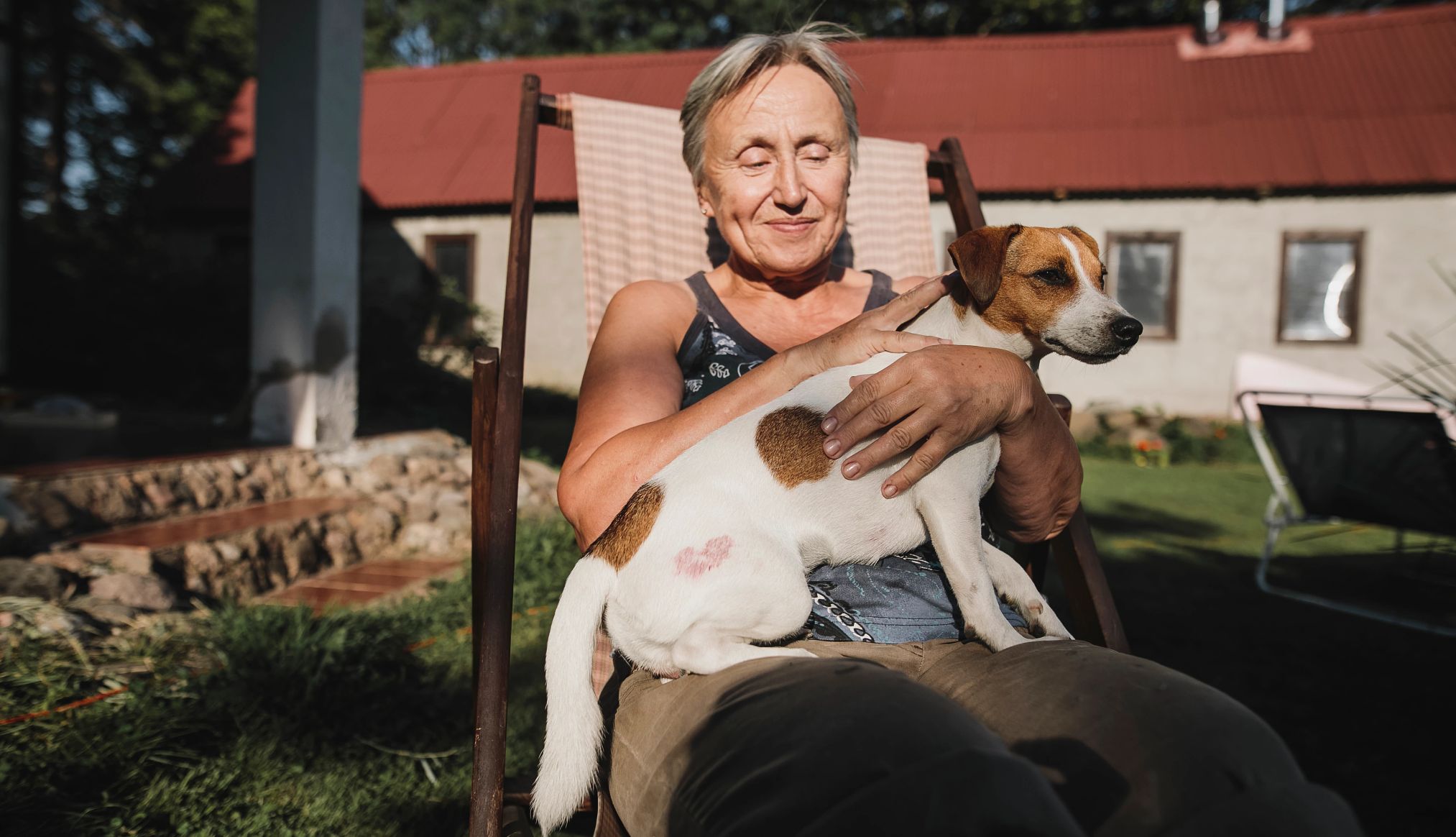AARP Hearing Center
Cari Shane,
For the past six ski seasons, I’ve dog sat for a retired couple I met during an 11-minute gondola ride at Keystone Resort in Colorado. I had stopped for a few runs while on my way to catch a flight home after my first official dog sit near Beaver Creek Resort using the travel app TrustedHousesitters.com (THS). Always one to chat on a ski lift, I told the couple about my dog sitting ways. Turns out, the Rubins’ son was getting married in Mexico and they were looking for a dog sitter for their rescue pup, Nora, a shepherd mix.
Since that short but fateful conversation, every winter the Rubins give me a free house, free car and, as I like to say, a free dog when they are away. It’s a direct barter with them, as well as other pet owners I’ve met through THS. I’ve discovered that, at 58, I’m an in-demand dog sitter; after all, between dog walks, skiing and work, I let the dog owners know I’ll have little energy to throw a rager; plus, I always vacuum before I leave.
As it turns out, 13.2 percent of THS sitters are 45-54; 15.4 percent are 55-64; and 10.5 percent are 65-plus. The average age of members at Trust My Pet Sitter, another pet sitting site, is 53, says Angela Fagan who launched the company. She chalks it up to owners wanting sitters with life experience who can deal calmly with issues that may arise.
Honing my hack, I’ve clocked 63 days on the Colorado slopes this year. If not for my pet sitting system, my three months in the Rockies would have cost me $17,000 to $36,000 for accommodations and a rental car.
Pet sitting is an approach to travel that helps to solve a problem facing nearly half the U.S. population. According to a recent Bankrate report, 47 percent of those surveyed say they are forgoing travel this summer, 65 percent citing affordability. More than 1 in 3 surveyed say they plan to go into debt to travel.
A $2.64 billion industry, pet sitting is projected to grow 11.6 percent globally by 2030, according to Grand View Research, a market research and consulting company. Pet care, especially at home, can eat away at a vacationer’s budget. For the traveler, staying at a destination for free in exchange for pet sitting can mean more travel and a very different experience: Horse lovers who want to visit New Zealand can ride every day for free, and dog-obsessed hikers can care for a Great Pyrenees in Utah’s Wasatch Mountains. According to Grand View Research, North America holds the largest pet sitting revenue share with more than 35 percent of the global market.
With membership plans ranging from $50 to $400, there are more than two dozen companies globally that offer pet sitting bartering services to connect owner and sitter, including THS, Trust My Pet Sitter, Nomador, MindMyHouse, HouseCarers and country-specific ones, such as Kiwi House Sitters in New Zealand. Some services are very hands off, providing the platform to the owners and sitters and leaving the connecting to the members. Others get very involved, matching owner and sitter like a recruitment agency and requiring vetting of both pet sitter and pet parent.
Before signing up for any service, check visa and immigration policies for your destination. Pet and house sitting could be seen as work and not allowed on a tourist visa.





































































